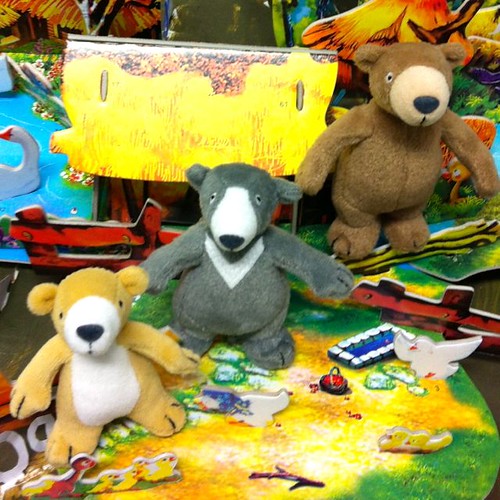Last year, in my capacity as teacher-librarian – and the school’s Possum magic Book Rap coordinator – I was invited to observe our ESL (English as a Second Language) Stage 3 students making Vegemite sandwiches with their ESL teacher.
I’d been encouraging the teacher to immerse herself and her students into the book rap, which they did – even though it was aimed at Stage 1 (Years 1 & 2) students. Their food preparation activity was the practical aspect of a lesson about writing procedures, in this case a recipe. it was also the culminating activity of the students’ work on the actual book rap. In the Mem Fox & Julie Vivas picture book, Hush the little, invisible possum was able to again turn (and stay) visible by eating Vegemite sandwiches, pavlova and lamingtons on her birthday.
There were plenty of laughs to be had as these ten- to twelve-year-old students grappled with the uniqueness that is Vegemite – not to mention their admirable manipulation of the English language – when their Australian experiences are so limited. I mean, it’s hard enough to explain to Australian-born students why “knife” starts with a “k”, let alone informing newly-arrived students that this dark-coloured, salty, mysterious, yeast extract is a favourite food of many Australian children, and that it’s a by-product of the great Aussie beer-brewing process.
The ESL students were already demonstrating keen Australian senses of humour. After being told that the steps of a procedure always begin with a verb, one student rejected Step 4, “Eat Vegemite sandwich”, in favour of her own Step 4: “Put Vegemite sandwich in bin.”
(That’s “trash” for any North Americans reading this blog, by the way.) My friends and I have been known to foist Vegemite upon unsuspecting US visitors Down Under. Their usual response is, “It looks like axle grease” – and US science fiction author, David Gerrold, once accused an Australian convention audience, “… and I believe you feed this to young children?”
The students at school did survive their Vegemite experience last year, but only just. One had previously boasted he “ate all foods”, but even he had found one to cross off his list. I explained to the students that I would be accepting their invitation to turn up to the lesson the next week, when they are planning to follow a procedure for making lamingtons! (I hate lamingtons! I’ve often postulated that my mother was once frightened by a rogue coconut while I was in the womb.)
In a few weeks, the new Stage 1 book rap (on the picture book Wilfrid Gordon McDonald Partridge) will, hopefully, have some unique new features. At least, that’s what we’re planning. Oh yes, school is back for a new year on Tuesday. How time flies…

